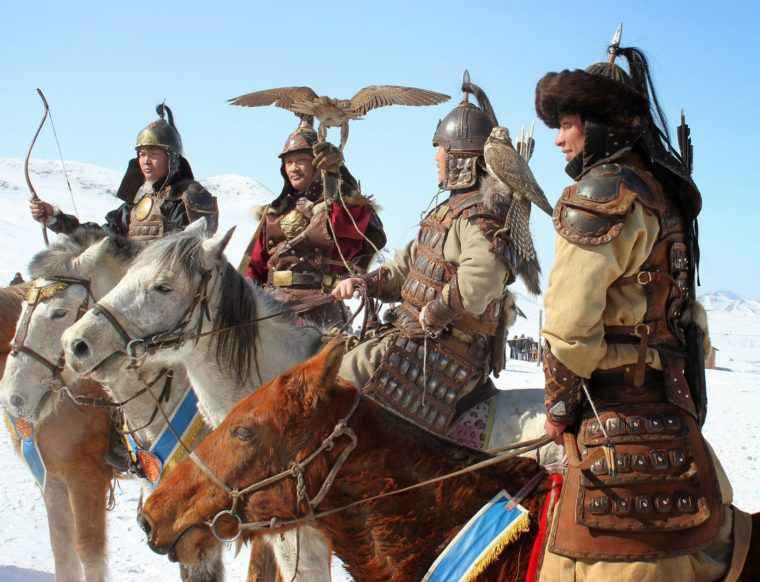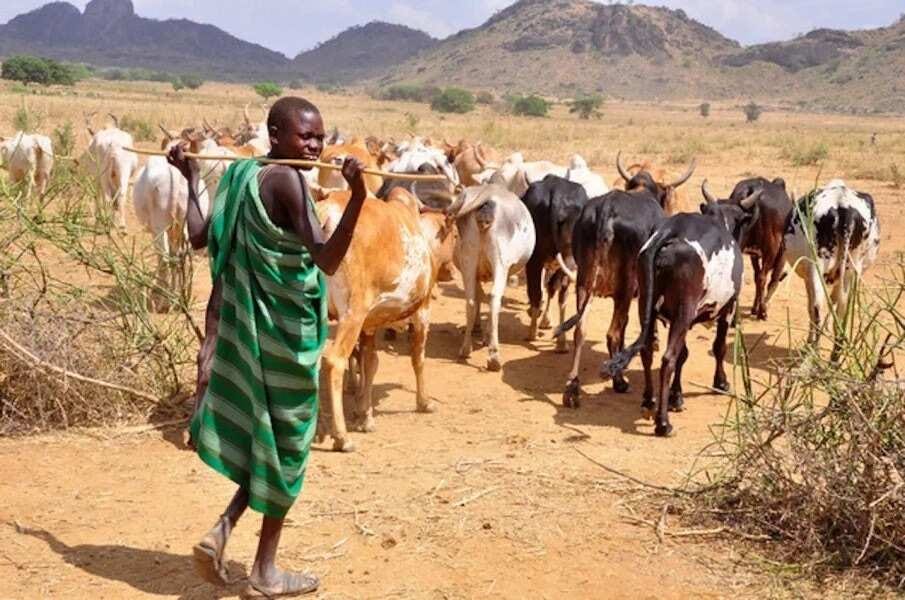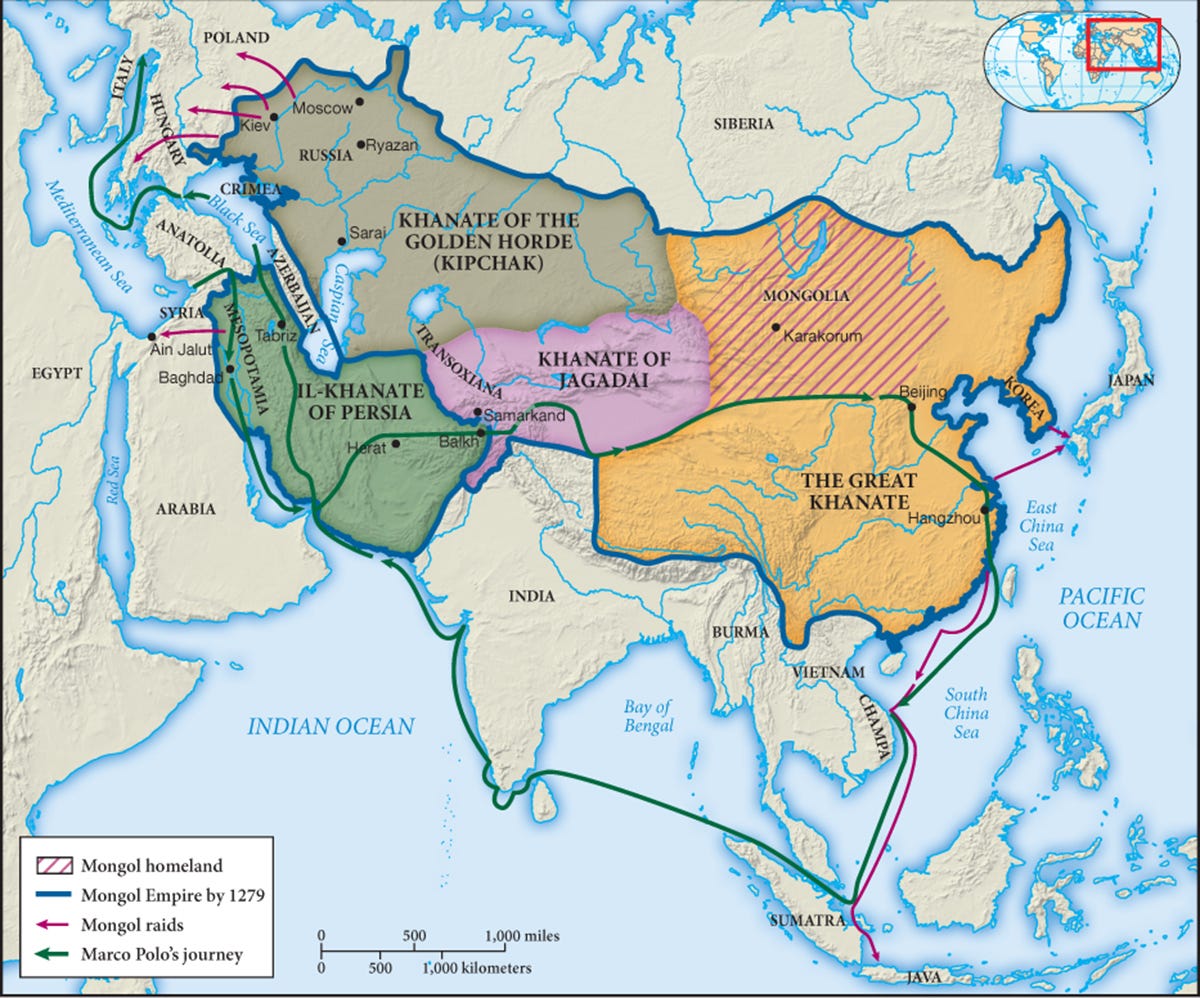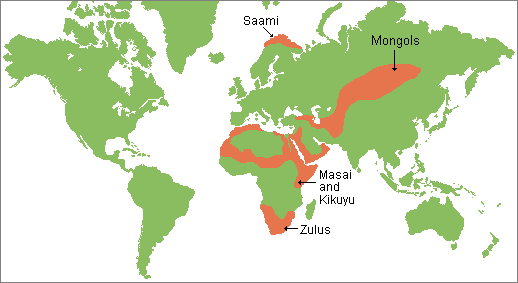The Horsemen ride
Herding societies: A society type that punched way above its weigh class (just ask the Chinese)
Herding societies are a type of society that produces the majority of its calories from:
Herding domesticated animals on the wild range.
Famous examples of Herding societies include Mongols, Arabs, and Comanche. This type of society has dominated East Africa, Central Asia, and the Deserts of the Middle East and North Africa for the last two millennia. Because of the unique character of these types of food, Herding societies were very different from other types of societies.
See also my other articles on Society Types and related topics:
Why are there such huge variations in income across the globe?
Commercial societies (which invented modern progress)
Most of the following is an excerpt from my book From Poverty to Progress: Understanding Humanity’s Greatest Achievement. It is part of a series of excerpts that I am publishing on Substack. You can purchase discounted copies of my book at my website, or pay full prize at Amazon.
If you are interested in this topic, you should read my “From Poverty to Progress” book series:
Take a look at the above graphic, which I explain in greater detail here.
While Horticultural and Agrarian societies were spreading across many biomes for thousands of years, the Savanna, Steppe, Desert, Boreal Forest, and Tundra were still dominated by widely dispersed Hunter-Gather tribes and occasional fishing societies. The potential of these biomes for denser human habitation was as yet untapped due to a lack of food.
Herding societies evolved out of Agrarian societies (or possibly Horticultural societies) sometime around 1000 BCE in the Central Asian grasslands (or steppe). Inhabitants gradually learned how to invent new technologies and processes that enabled them to indirectly exploit the grasses that dominated their biome.
Whereas humans can not digest cellulose, many herd mammals can do so. Gradually, humans learned how to control those herds and invented other related technologies. Humans could then subsist on the meat and milk from those animals. Herding societies rapidly spread to contiguous biomes where:
Horticultural and Agrarian societies were largely absent.
Vegetation was available that enabled large-scale herding of mammals
Whereas Agrarian and Horticultural societies subsisted largely on growing domesticated plants, Herding societies subsisted on herding domesticated mammals on the open range (camels in the Desert; Reindeer and Yaks in the Tundra and Boreal forests; Horses in Temperate Grasslands; Cows in the Savanna; Sheep and Goats in the Temperate Highlands).
Key technologies enabled Herding societies to do the following:
Domesticate wild herd animals (particularly the horse and camel)
Ride horses and camels (using the saddle, stirrup, halter, bit and bridle)
Transport goods rapidly across the land (using horse-drawn carts and wagons)
Wage war against other societies (using chariots, horse riding, and firing composite bows)
As they lived in hostile environments without defensible frontiers, the members of Herding societies often evolved into fearsome warriors. The skills necessary for herding and slaughtering large animals translated well into the skills needed for ambushing and killing humans. In particular, the ability to use the composite bow-and-arrow from a galloping horse gave Herding societies a critical military edge.
Important Herding societies in history have included the Mongols, Iranians, Arabs, and Turkic peoples. Together they inhabited a broad swath of Eurasia stretching from Mongolia, through Central Asia, Iran, the Middle East, and North Africa. Because these regions are contiguous with most of the regions that supported Agrarian societies, these Herding peoples have played an outsized role in human history.
While Herding societies were poorer and much smaller in population size, they were man-for-man far superior to Agrarian societies militarily. In their home region, they could easily avoid combat when outnumbered and could rapidly concentrate where their opponents were weakest.
And where they had horses and camels, Herding societies could conquer vast Agrarian empires. While they could not absorb the far larger populations of Agrarian societies, Herding societies established small warrior elites that ruled the cities and farmers through fear. Because Herding societies were fundamentally unsuited to farming, however, these empires were usually ephemeral.
By far the most historically significant Herding societies lived in the Central Asian steppe. In the period between 400 and 1500, these peoples formed expansive empires that dominated the Agrarian societies of China, Korea, India, Persia, Russia, and the Middle East. While these empires were often short-lived and led to few long-term changes, they did have a devastating impact on the lands that they conquered.
Despite their ability to dominate Agrarian societies, it is doubtful whether Herding societies were able to deliver progress to their people in the long term. Undoubtedly, the conquest of richer Agrarian societies enabled them to extract greater resources from farmers, but most of these empires were fleeting in duration.
More importantly, these Herding empires were parasitic in nature. Rather than creating wealth, they extracted wealth from Agrarian societies through military conquest. Once Herding societies lost their military dominance because of the invention of firearms, their people returned to their poorer Herding lifestyle.
Nomadic Empires
The Mongols were only the most famous of the steppe nomads that conquered huge swathes of adjoining regions. Here is just a partial list of the most significant. Each was a significant military threat to the surrounding regions.
You can click the links to learn more about each:
Mongol Empire, the largest and most famous.
Scythia, who dominated the Pontic steppe from the 3rd Century BCE to 600 BC
Sarmatians, who dominated the Pontic steppe in the 3rd-4th Century BCE
Xiongnu, the first of the eastern steppe herders who influenced China
Kushan Empire, which dominated Central Asia and northern India around the 2nd Century
Huns, who played a key role in the collapse of the Western Roman Empire. The Germanic tribe who actually conquered the Romans were basically trying to flee from the Huns.
Mughal Empire, who dominated India for 350 years before the arrival of the British.
Seljuk Empire, who dominated the Middle East from 1037-1194.
Various Turkic tribes, who conquered the Byzantine empire and conquered most of the Middle East, Balkans, and North Africa. They founded the Ottoman empire, one of the greatest empires of the Agrarian era.
Bulgar Turks, who conquered and settled what is now Bulgaria between the 5th and 7th centuries.
Magyars, who conquered and settled what is now Hungary between the 5th and 7th centuries.
Arabs, (mounted warriors from the Arabian deserts) who conquered huge swathes of the Middle East, Persia, and North Africa.
A large number of Central Asian tribes, who conquered and ruled China for a significant portion of Chinese history. Many “Chinese dynasties” were actually dominated by non-Chinese conquerors from the North. Throughout Chinese history, the threat from the Central Asian tribes was the primary military threat.
The Legacy of Herding Societies
The legacy of Herding societies is still with us today. The descendants of Herding societies in the year 1500 – Central Asia, the deserts of the Middle East and North Africa, the Savanna of Africa, and the Tundra of the far North – have had trouble copying the success of modern Industrial societies. To the best of my knowledge, no society or sub-national minority whose ancestors descended from Herding Societies in the year 1500 is above average in socioeconomic success.
While some were able to achieve wealth through the extraction of fossil fuels and exporting them to wealthier Industrial societies, the descendants of Herding societies have had difficulty achieving success without this somewhat artificial resource. And the enormous wealth derived from fossil fuels has enriched only a small elite within those countries.
Most of the above is an excerpt from my book From Poverty to Progress: Understanding Humanity’s Greatest Achievement. It is part of a series of excerpts that I am publishing on Substack. You can purchase discounted copies of my book at my website, or pay full prize at Amazon.
If you are interested in this topic, you should read my “From Poverty to Progress” book series:
See also my other articles on Society Types and related topics:
Why are there such huge variations in income across the globe?
Commercial societies (which invented modern progress)











Good article, with two minor corrections. The North American tribe is spelled Comanche. This looks like a last second addition because no where else do you mention anything to do with the Americas. The Comanches only became herders after the Spanish arrival. Also in the paragraph by the last chart, instead of ancestors I think you mean descendants.
2 questions if you don't mind.
Why do you think herding society evolved from agrarian ones and not straight from hunter-gatherers ? That is just by taming then domesticating their formers preys without a plant cultivating phase which presents completely different constraints and lead to very different social structures.
Beside, as these people were not waging war just for the sake of it, I wonder how much of the food/energy needed by herding societies has always been depending on raiding neighbouring farmer communities ? In other words, it seems that actually, they were never fully sustainable ?